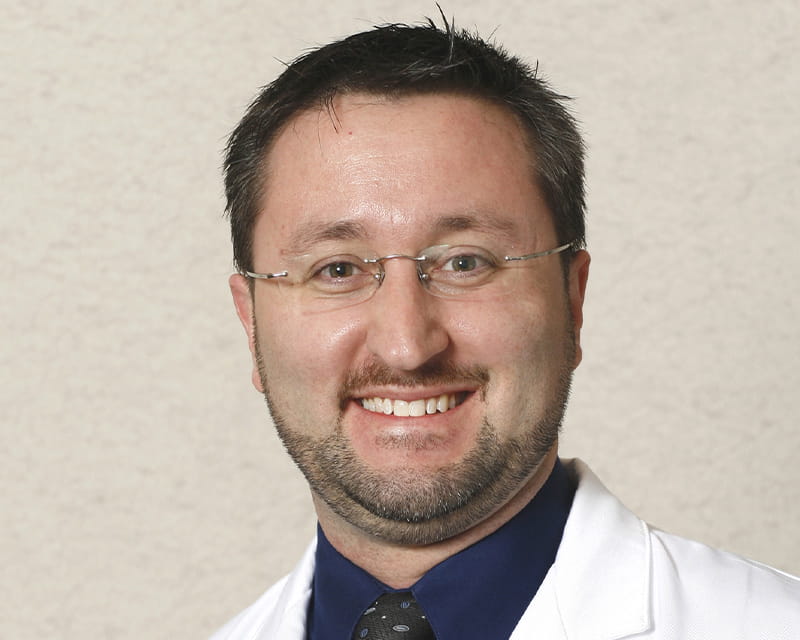
Robotic-assisted surgery with intraoperative radiation offers new hope to patients with local cancer recurrence
 As part of its ongoing ambition to “be a leading college of medicine that transforms the health of our communities through inclusive and innovative education, discovery and care,” The Ohio State University College of Medicine is collaborating with medical colleges across the state to develop Quality Improvement (QI) Hubs. The five-year research and innovation project is funded by the Ohio Department of Medicaid with the goal of pooling the knowledge and resources from the participating institutions to improve the quality of health care in the state, especially for patients on Medicaid and those who may otherwise not have as much access to care.
As part of its ongoing ambition to “be a leading college of medicine that transforms the health of our communities through inclusive and innovative education, discovery and care,” The Ohio State University College of Medicine is collaborating with medical colleges across the state to develop Quality Improvement (QI) Hubs. The five-year research and innovation project is funded by the Ohio Department of Medicaid with the goal of pooling the knowledge and resources from the participating institutions to improve the quality of health care in the state, especially for patients on Medicaid and those who may otherwise not have as much access to care.
The Ohio State QI Hub project is being facilitated through CATALYST, a multidisciplinary research center within the Ohio State College of Medicine focused on improving the delivery of comprehensive health services.
The principal investigator on the project is Catherine Quatman-Yates, PhD, DPT, PT. Dr. Quatman-Yates is an associate professor in the Division of Physical Therapy in the Ohio State School of Health and Rehabilitation Sciences and has conducted numerous research projects on improving patient outcomes through physical therapy.
The clinical specialist lead for Urology is John DeLancey, MD, a general urologist and assistant professor of Urology in the College of Medicine.
“The project is more primary care focused,” Dr. DeLancey says. “I come into this as someone with clinical knowledge and expertise to help facilitate how the quality improvement research actually integrates into a clinical practice.”
Joining Ohio State in this endeavor are six other medical colleges in Ohio: Wright State University, University of Cincinnati, Ohio University, Northeast Ohio Medical University, Case Western Reserve University and University of Toledo.
Each participating institution will establish their own QI Hub, focused on the same three components:
Each participating college will first need to establish the internal systems and protocols necessary to train its faculty, medical staff and students on the principles of quality improvement research.
The second component of a QI Hub is establishing the organizational infrastructure and personnel needed to conduct quality improvement research projects within the medical college.
The third component is that each Hub will develop a unique, targeted research project for quality improvement.
The QI Hub project is established around a five-year, multistage plan that progresses through preparation, research and implementation.
The focus of the first year for each institution is building out the necessary infrastructure to carry out ongoing QI research. First, the teams will need to identify and evaluate what types of programs and efforts currently exist within their respective institutions. Second, they’ll select a new QI project and develop a detailed implementation plan in preparation for year 2.
During the second year, each Hub will carry out and pilot the target project or intervention identified during the previous year. This will involve putting the principles of QI learned through the training component into practice. The Hub will also need to critique their results and learning outcomes and identify what can be improved in the future.
The third year involves sharing these learning outcomes, policies and protocols with a neighboring QI Hub. The focus here is learning how well the QI measures can be translated and interwoven into a different institution. It will also foster stronger professional relationships through the free exchange of knowledge and innovation.
In year four, the goal is to help implement the project outcomes in a regional health care facility outside the QI Hub collaborative. The purpose is to determine how well the research can apply to a non-academic health system.
The final stage in year five is to disseminate the quality improvement interventions across the entire state, for health systems and providers to implement as needed.
“The QI Hub efforts are primarily focused on quality improvement opportunities that are common in the Medicaid population,” Dr. DeLancey says. “We’ve just started our first year, so we’re still in the early stages of evaluation and training. We’re currently working to identify a test case project.”
Although funded by the Ohio Department of Medicaid, the QI Hubs will have a much broader impact across health care institutions in Ohio for all patient populations.